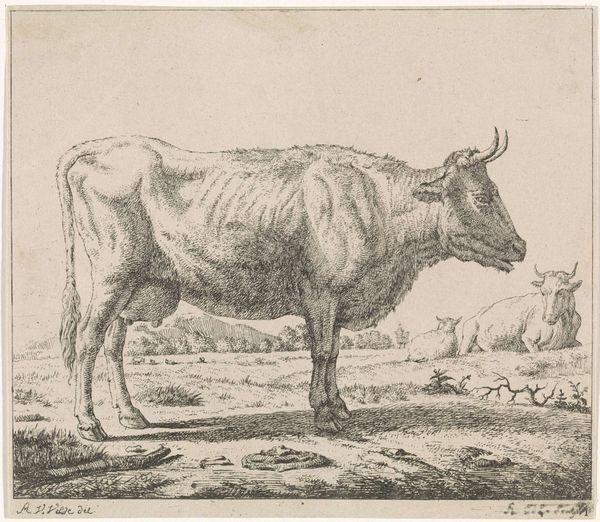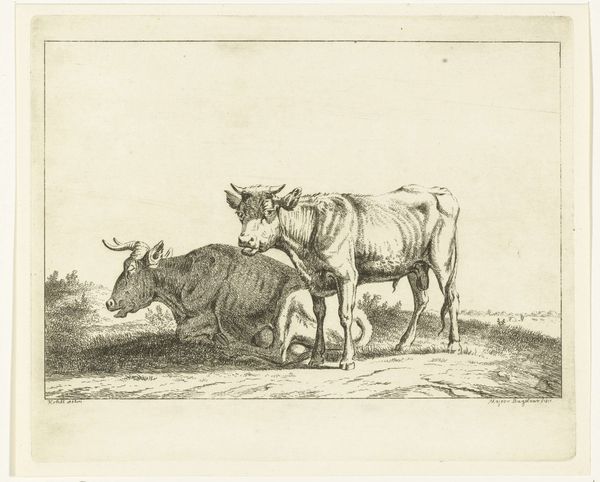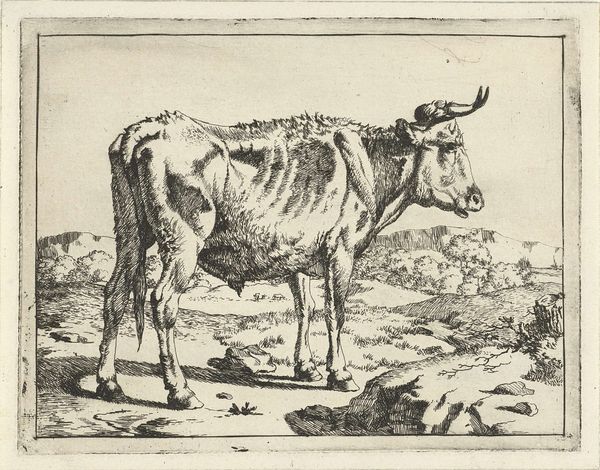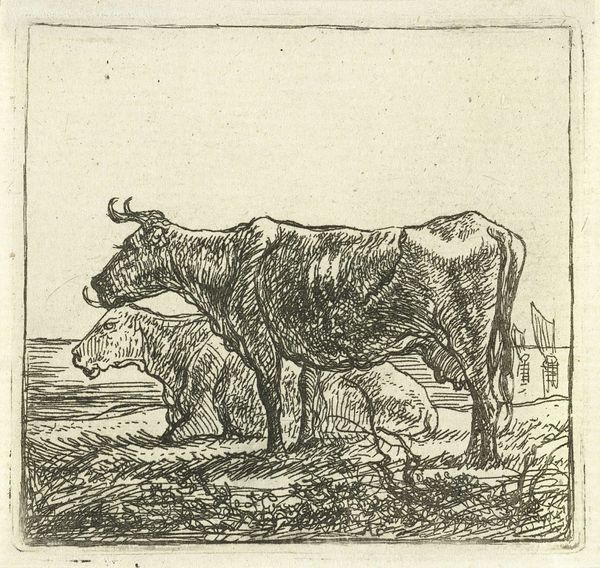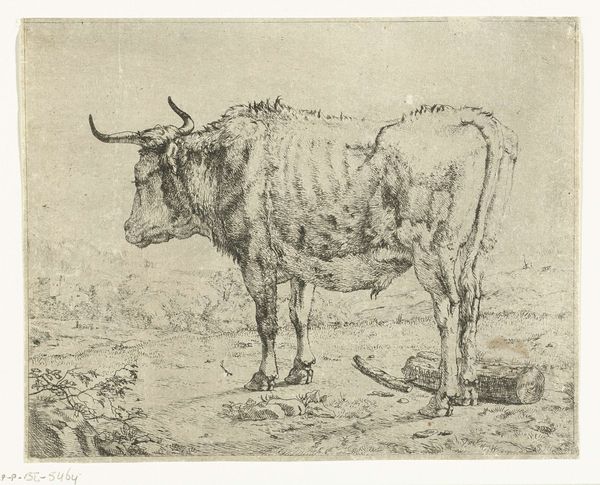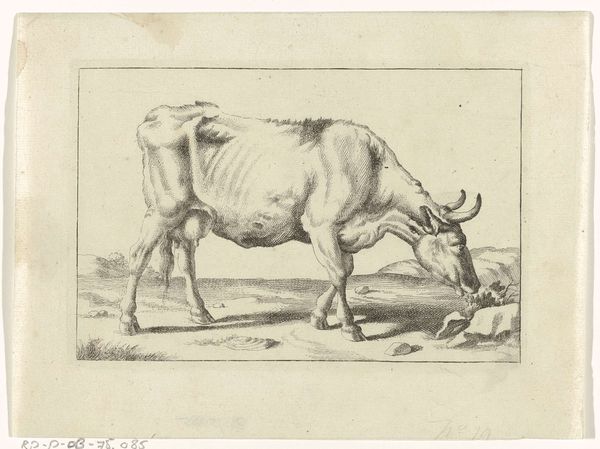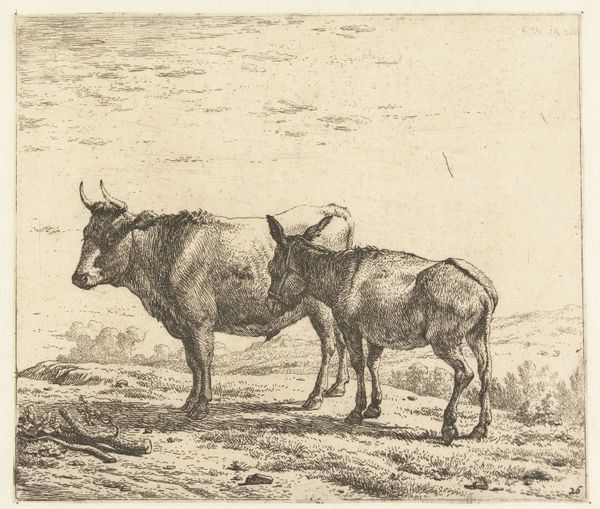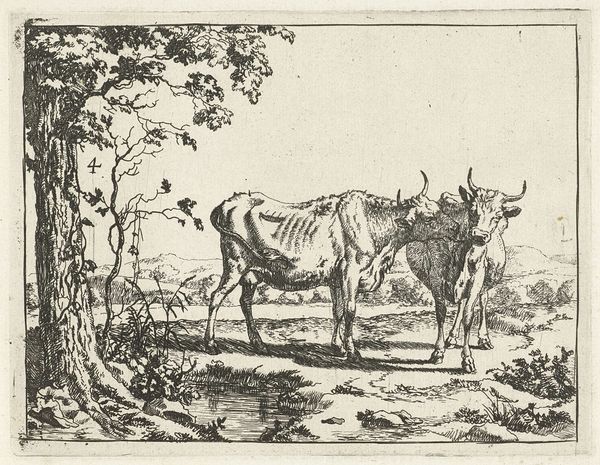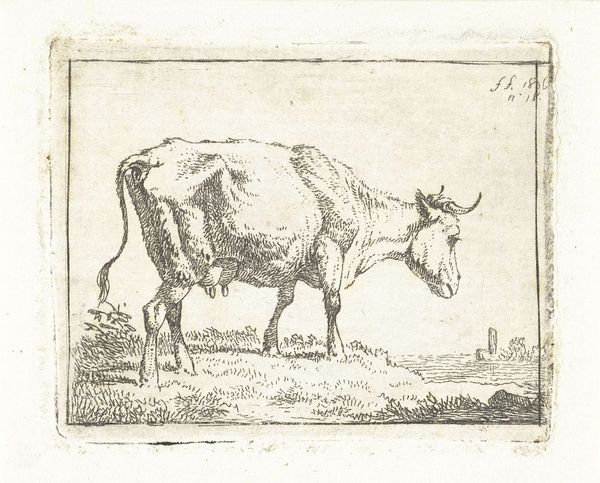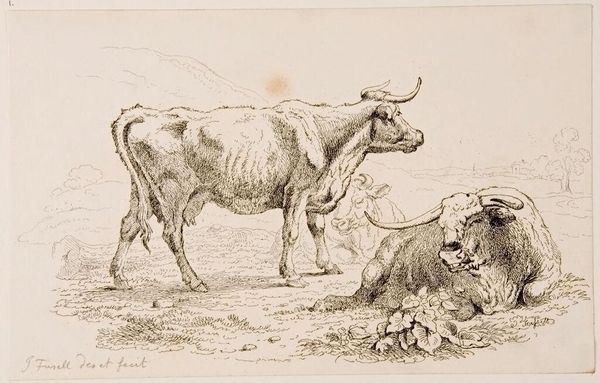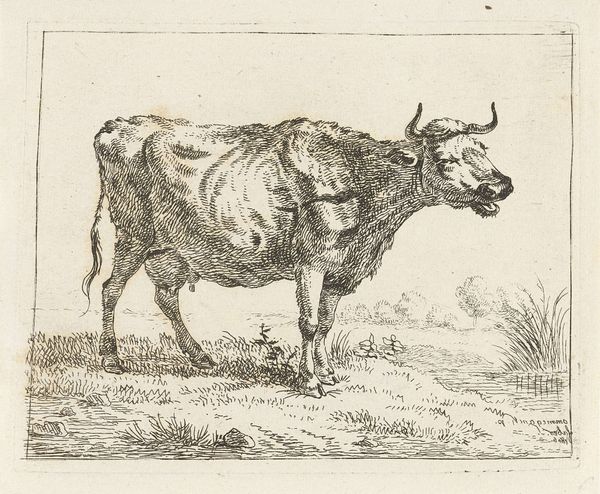
Schaap naar rechts / Staande koe in het water 1792 - 1810
0:00
0:00
print, engraving
#
animal
#
dutch-golden-age
# print
#
old engraving style
#
landscape
#
form
#
line
#
history-painting
#
engraving
#
realism
Dimensions: height 209 mm, width 129 mm
Copyright: Rijks Museum: Open Domain
Curator: This engraving, titled "Schaap naar rechts / Staande koe in het water," was created by Wouter Johannes van Troostwijk between 1792 and 1810. It resides here at the Rijksmuseum. Two studies appear within the print: a sheep above and a cow below. What strikes you first about this diptych of barnyard creatures? Editor: The sheep is upside down. That throws me for a loop! It's as though I am meant to view it that way, but my brain resists. I find my eyes lingering there, while the cow feels more… ordinary? And oddly substantial given the bare linework. Curator: That sheep certainly grabs your attention! It makes me think about the role of these kinds of studies. Troostwijk created them to develop his skill in depicting the natural world. The poses perhaps reveal his process, or maybe showcase the versatility in his repertoire. What function might these animal forms have served at the time, within society? Editor: They seem simple, direct and maybe a little bit humble; like the kind of honest rendering of things that feels both necessary and fleeting. I see a world where it's important to document the appearance of animals accurately—essential forms, essential resources. And there's a sensitivity there, in how the animal occupies the space. Did the artist create studies of them outside, from life, do you imagine? Curator: Troostwijk's larger body of work reveals his focus on landscape art. Given the period, it is reasonable to consider his immersion in the pastoral environment outside the city and, based on the fine details within this image, I find it quite plausible to suggest he might have made observational studies from life in preparation for this or other works. Also, these kinds of images served as vital forms of visual communication and education—essential knowledge in an agrarian society. Editor: Knowing all that... now I sense the print as a window into the past, not only viewing form but glimpsing this shared experience. Thank you! Curator: A productive perspective. Indeed, exploring the purpose and cultural context of such images enables a deeper connection to this Dutch master’s era.
Comments
No comments
Be the first to comment and join the conversation on the ultimate creative platform.

